We have heard New Zealand referred to as “paradise” so we
arrived with some pretty high expectations. So
high that I was a bit concerned that we would be disappointed. After all, we have been extremely fortunate and have seen so much scenic beauty in our lifetimes. Especially in the past two years of traveling that provided opportunities to see
spectacular mountains, gorgeous lakes, lovely forests, beautiful waterfalls and
dramatic coasts. I have wondered if we could
have become jaded to natural beauty. While much of
what we have seen in New Zealand is familiar at the same time in many ways it
is very different, more exotic and wilder. So I am comfortable saying that New Zealand IS paradise…and an
added bonus is that the "natives" are very friendly.
Where we’ve been –
New Zealand, South Island (northern part)
2/10 – 3/4 2012
In this post:
- Must see places and hidden wonders on the South Island
- Abel Tasman Track in Abel Tasman National Park
- Heaphy Track in Kahurangi National Park
- Routeburn Track in Mt Aspiring and Fiordland National Parks
We saw so much during the three and a half weeks that we spent on the North Island but we really looked forward to seeing what the South Island had to offer. We once again relied on one of Scott Cook’s excellent guides, NZ Frenzy: New Zealand South Island, which helps visitors to find "all the must-see places plus non-touristy hidden wonders". All of our New Zealand Great Walk photos as well as photos of other New Zealand sights are available on Flickr.
From the beautiful coasts at Cape Farewell …
… and Wharariki Beach.
To gorgeous waterfalls such as Mariua Falls …
… and “Surprise Falls”, which hides in a side canyon downstream
from the easily seen Fantail Falls.
As well as exotic rock formations including Punakaiki, …
… Moria Gate Arch, ...
… Oparara Cave, …
… and the bizarre formations of Rawhiti Cave.
However, we knew that the focus of our time on New Zealand’s
South Island would be doing six of New Zealand's “Great Walks”. We have already done the Tongariro
Northern Circuit in Tongariro National
Park while on the North Island and if interested you can read about our
experience as well as see the photos.
Our first Great Walk on the South Island was the Abel Tasman Coastal Track
in Abel
Tasman National Park. This track is
not a loop but the DOC (Department of Conservation) brochure lists several transportation options including traveling by air, bus and
boat. We had Aqua Taxi transport us from Marahau to Mutton
Cove. After getting off the boat we did
the short side trail to Separation Point which separates Golden Bay from Tasman Bay.
Golden Bay seen from Separation Point in Abel Tasman National Park, New Zealand
As is common with nearly every other coastal hike this track
frequently climbs up over headlands before dropping back down to the
coast. Sometimes we had great views
of the golden beaches and aquamarine water below…
Tasman Bay seen on Abel Tasman Coastal Track in Abel Tasman National Park, New Zealand
… and sometimes the track took us through forest dense
enough we almost forgot we were near the coast.
Jean on Abel Tasman Coastal Track in Abel Tasman National Park, New Zealand
And just like other coastal hikes it was essential for us to
consult a tide chart as there are portions of the track that cross estuaries. Two, the Onetahuti estuary and the Awaroa
Inlet, can only be crossed within a specific time period around low tide. But just because the tide is low doesn't mean your feet don't get wet.
Jean wading across Awarora Inlet at low tide on Abel Tasman Coastal Track in Abel Tasman National Park, New Zealand
In some cases there are high tide routes available. While the hide tide route around Torrent Bay
is longer than the low tide route it does take you closer to a side trail to a
feature known as “Cleopatra’s Pool”.
Cleopatra’s Pool near the Abel Tasman Coastal Track in Abel Tasman National Park, New Zealand
Access is easy by boat to any number of spots
along the Abel Tasman track and it is a popular track for day hiking and kayaking. As a result there seemed to be more people than on other tracks. On our first night we were dismayed by how cramped
and crowded the Awaroa Campground was.
Although it was entertaining to hear a young French woman in a nearby
tent explaining her “relationship issues”, which were apparently complicated by her “sensual nature”,
to a fellow she had recently met.
However, our second night at the Anchorage Bay campground was
great. The camping area is more spread
out and most campers had their tents clustered near the cooking shelter. We
were happy to find find a spot in the trees well away from anyone else so we could listen to
the waves instead of hearing about “relationship issues”. Although I admit I was curious about what that girl’s
“sensual nature” was up to.
Waiharakeke Bay seen on Abel Tasman Coastal Track in Abel Tasman National Park, New Zealand
Doing the Abel Tasman Track also provided us with an educational introduction
to a common native species - sand flies. What
New Zealand lacks in things that want to kill you; mountain lions, bears,
snakes, etc, it makes up for with sand flies.
Anytime we sat down to rest, eat lunch or enjoy the view we did not have
to worry about being tempted to sit there too long. The presence of those small but incredibly
voracious insects made the decision to get going again very easy.
Tasman Bay seen on Abel Tasman Coastal Track in Abel Tasman National Park, New Zealand
We were lucky to have had great weather for the first two
days of our trip. Given New Zealand's commonly wet weather it was not surprisingly it deteriorated on our last day However, it occurred on what we thought was the least scenic part of the
track so we had no complaints. All of
our Abel Tasman Track Photos are on Flickr.
The next Great Walk on our list was the Heaphy Track within Kahurangi National
Park. We realized we had
miscalculated by not monitoring the weather forecast. The period of fine
weather we had been enjoying while seeing other sights was coming to an
end. However, as we were anxious to head south to Fiordland National Park, we weren’t willing to devote more
time and wait for an improved forecast. Our choice was either we do the Heaphy Track in the rain or we don’t do it at all. So we decided to do it in the rain.
We had planned to camp in our tent on this track however the
campground at Perry Saddle was closed as a new hut was being built in its place. The remaining campgrounds are not well positioned for the number of days we
wanted to do this track. That fact combined
with the impending wet weather encouraged us to leave our tent behind and rely
on the huts for shelter.
Former site of the Perry Saddle Campground, soon to be new Perry Saddle Hut on the Heaphy Track in Kahurangi National Park, New Zealand
This track is also not a loop but again there are options for getting the long way back to where you
started. We considered taking the bus, a
six hour trip, but decided it was worth paying a bit more (about $30 apiece) for
a fun and scenic flight. We had Jim of Remote
Adventures fly us from Karamea to the trailhead at Brown Hut . The 25 minute flight followed the Heaphy Track and we were treated to what would be our best
views of the track.
After landing …
Kohaihai River (and the southern end of the Heaphy Track) seen from the air along Heaphy Track in Kahurangi National Park, New Zealand
After landing …
The “landing strip”
near the Heaphy Track trailhead in Kahurangi National Park, New Zealand
…at the "Cow Pasture Airport" a friend of Jim’s drove us the short distance to the trailhead. As the weather was deteriorating we needed to fly in the evening prior to our starting the Heaphy Track so we spent the night in the Brown Hut. We had
it completely to ourselves…until we were startled in the night by eerie flashing lights but it was only the headlamps belonging to four late arrivals. The next day we ascended the track through the
woods stopping at the only viewpoint on the way.
Seen from viewpoint at "Flanagan's Corner" while on the Heaphy Track in Kahurangi National Park, New Zealand
Once we arrived at the Perry Saddle Hut we had planned to climb the nearby Mt Perry.
However, we got talking to some other trampers and squandered what
remained of our dry weather. The rain
started that afternoon and continued through the night as well as the entire the
next day.
The next morning we began to question the wisdom of doing
this track in the rain. However this
experience provided us with an invaluable education in the Kiwi attitude toward
getting wet. As we prepared to leave for
the next hut the DOC Hut Warden told us a bit about the portion of the track across the Gouland and Mackay Downs that we
would encounter later that day. She casually
recalled a time when the water had been chest deep but that it was “no problem
because the water was clear enough to see the boardwalk below and the current
wasn’t too strong”. With that happy
thought we set out into the pouring rain.
The track descends from Perry Saddle to cross the tussock
covered downs past the Saxon Hut (where we took a lunch break out of
the rain) toward the Mackay Hut, our destination for the day. Not that we saw much of it. We tried to visualize what we had seen from
the air two days before.
Jim told us all about the Heaphy Track below...too bad we couldn't hear most of what he said.
As we approached the Mackay Downs we encountered a deep
stream. We naively stopped and put on
our water shoes, in an effort to keep our socks relatively dry, and rolled up our
rain pants. Not long after we decided it
was safe to put our socks and boots back on we discovered that the numerous small streams crossing the downs had swelled and merged. We finally understood the futility of keeping
anything dry in such conditions so we sloshed
through the water flowing over the track feeling
lucky that it never went above our knees.
Our mistake was not getting an earlier start as we later learned that those
who did had avoided wading all together.
On the other hand, those who left after we did encountered water that
was even deeper but lucky for them it was only
crotch deep, still preferable to chest deep.
Gouland Downs seen from the air along Heaphy Track in Kahurangi National Park, New Zealand
The next day started out drizzly but eventually cleared and
we had mostly dry weather for the remainder of or trip. The track descends form Mackay Downs through
forest until it crosses both the Heaphy and Lewis Rivers. Being from the US Pacific Northwest we are accustomed
to seeing water stained to the color of tea by tannins leaching from evergreen trees.. However, the water
in these creeks and rivers is stained to such a rich dark brown that it resembles Root Beer. We are also
accustomed to seeing creeks and rivers spread out on beaches before calmly flowing
into to the ocean. But here the creeks,
boosted by the recent rainfall, rushed through narrow channels and tumbled over rocks
before crashing into the Tasman Sea.
Wekakura Creek flowing into the Tasman Sea along the Heaphy Track in Kahurangi National Park, New Zealand
The last day on the Heaphy Track was our
favorite as the track took us through some
outrageous forest…
One of many outrageous trees seen on the Heaphy Track in Kahurangi National Park, New Zealand
…and along the beautiful rugged coast.
Tasman Sea seen on the Heaphy Track in Kahurangi National Park, New Zealand
In hindsight it might have been smarter to skip doing this
track and just have Jim fly us over the track and back to Karamea.
We could have then waited for the rain to stop and day hike up this last portion of the Heaphy
Track. Of course if we had done that
then I might never have learned to be grateful for water over tracks that is less
than chest deep. All of our Heaphy Track Photos are on Flickr.
Next up was the Routeburn Track. After our wet experience on the Heaphy Track
we followed the weather forecast closely as we headed south and were
lucky to book the Routeburn Track during an upcoming period of good weather. The Routeburn Track, going east to west,
starts in Mt
Aspiring National Park and crosses into Fiordland National
Park. We again decided to use huts
as there is no camping at a key location, Routeburn Falls. We chose to not do the long day required
to hike from Routeburn Flats over Harris Saddle to the campground at Lake Mackenzie
Hut. And, as this track is also not a
loop, we had to make some transportation arrangements. This time we had Mike with “Track Hopper” drive our campervan from
Routeburn Shelter where we started to other end of the track at the Divide shelter.
On the first day of this track we were passed by about 50 young American
college students heading in the opposite direction. We had not seen that many Americans since we
left LA six weeks before and hearing so many voices with our “flat” American
accents sounded foreign to my ears after so many weeks of the more musical Kiwi
accent. After arriving at the Routeburn
Falls Hut (and securing two of the remaining three bottom bunks) we did some
exploring in the area, John with camera in hand, as always.
Routeburn Falls seen on the Routeburn Track in Mt Aspiring National Park, New Zealand
The next day we headed toward Harris Saddle, enjoying views
of Lake Harris along the way.
Lake Harris seen from the Routeburn Track in Mt Aspiring National Park, New Zealand
We stopped briefly at the Harris Saddle Shelter and climbed
to the top of nearby Conical Hill for still more great views including bits of Milford Sound and the Tasman Sea in the far ditance.
John and Jean on Conical Hill along the Routeburn Track in Mt Aspiring National Park, New Zealand
We then descended from the saddle and got our first sight of
Lake Mackenzie as well as the Lake Mackenzie Hut, which is barely seen at the far end of the lake, our destination for the day.
Lake Mackenzie on the Routeburn Track in Fiordland National Park, New Zealand
As we descended further we entered what is aptly called “The Enchanted Forest”.
The "Enchanted Forest"on the Routeburn Track in Fiordland National Park, New Zealand
The next day the track took us by Earland Falls …
Earland Falls on the Routeburn Track in Fiordland National Park, New Zealand
…before leading to the end of the track where we were
happy to see our campervan waiting for us in the parking lot at the Divide. All
of our Routeburn Track photos are on Flickr.
All of our New Zealand Great Walk photos as well as photos of other New Zealand sights are available on Flickr.
All of our New Zealand Great Walk photos as well as photos of other New Zealand sights are available on Flickr.
At this point we were about halfway through our New Zealand South Island
adventure. Next up - three more Great Walks; the Kepler, Milford and Rakiura Tracks.
This
next bit is just something that Jean has been thinking about.
Confessions of a “Backcountry Snob”
We love to backpack; going into the backcountry self
contained and self sufficient by carrying a tent, food, stove, water treatment,
sleeping bag and enough clothing to protect us from the elements. We love sleeping in our tent. It’s spacious with plenty of room for our
great sleeping bags and comfortable mattresses.
Our camp below Mt
Whitney on the John Muir Trail in Sequoia National Park, California
When we thought about our upcoming trip to New Zealand we
really looked forward to doing a lot of backpacking. But “backpacking” has a different definition
outside of the US referring instead to international travelers who are carrying
all their stuff on their back. A major
difference between New Zealand and the US is the presence of backcountry
huts. Hiking into the backcountry and
staying in huts is called “tramping” and staying in one’s own tent is called “camping”.
We were overwhelmed by the camping/tramping options on the many tracks in New
Zealand so we took the easy way out and decided to focus our attention on the
nine tracks that the Department of
Conservation (DOC) calls “Great
Walks”. All Great Walks, with the exception of the Milford Track, have
campgrounds as well as
huts.
North Arm Hut, Rakiura Track, Rakiura National Park, New Zealand
We have had limited experience with huts; they are almost
unheard of in the US, and the experiences that we have had were less than
favorable. In Tanzania, while on a trek
up Mt Kilimanjaro, we stayed in three different huts along the Marangu Route. The huts were fine. The problem was this one guy in our group, who the rest of us called
“Jim, the Grump” (but not to his face). Jim was an extremely restless sleeper and who snored …loudly. It got so bad that our guide felt compelled to
arrange for him to have a hut completely to himself.
Kevin, Jen and Jean (enjoying life after Jim moved out) inside
a hut at Horombo in Kilimanjaro National Park, Tanzania
Our next hut experience turned out fine ... once we finally got
there. However getting there was a bit of an "adventure". In
the fall of 2010 we backpacked to the Tonquin Valley in Jasper National Park,
Alberta. We had reservations to stay two
nights in the Wates-Gibson
Hut, one of the many huts run by the Alpine Club of
Canada (ACC). There were multiple
trails to the Tonquin Valley but we took the longer trail as the views would be
better.
The Ramparts above the Tonquin Valley in Jasper National Park, Alberta
It was late in the season and the trail was in poor
condition, with deep mud in numerous places (the trail is heavily used by
horses), and the going was slow. Later
on we encountered time consuming route finding issues through a deep wet
marshland (see above photo). It got to be late in the day
and we had not yet found the hut. It was getting colder and beginning to grow dark. The fact that we weren’t carrying a tent or a
stove made me feel very insecure and more fearful than I have ever felt while
backpacking. We were so thankful when we
finally found that hut.
The ACC Wates-Gibson Hut, Tonquin Valley in Jasper National Park, Alberta
After that everything was great. We were greeted by three friendly Germans who had a
roaring fire going in the wood stove. We
day hiked all the next day and, as the Germans had hiked out that day, we had the hut
completely to ourselves the second night.
John and Jean inside the ACC Wates-Gibson Hut, Tonquin Valley in Jasper National Park, Alberta
We also stayed two nights in the extremely popular ACC Elizabeth Parker Hut
near Lake O’Hara in Yoho National Park, British Columbia. It was autumn and the Larch trees had turned
golden so the hut was full. While we thoroughly enjoyed day
hiking the Alpine Circuit…
John and Jean on the
Alpine Circuit above Lake O'Hara in Yoho National Park, British Columbia
… our hut experience was less than enjoyable. Granted route finding was definitely not an
issue as a bus takes you within ¼ mile of the hut. Some people don’t even bother carrying a
backpack. I saw one person arrive at
the hut with a rolling suitcase. The hut
sleeps 16 on two wide platforms, one upper and one
lower. The first night I slept on the upper bunk squished
between John and grumpy “Bob from Montana”, a big guy and a restless sleeper who
snored...loudly. Fortunately on the second
night we got to be on the bottom bunk and I was grateful to be squished between
John and a nice quiet wall that I knew wouldn’t roll over on me.
ACC Elizabeth Parker
Hut near Lake O'Hara in Yoho National Park, British Columbia
When we started making firm plans for our upcoming trip to
New Zealand we felt lucky to be able to book the incredibly popular Milford
Track and we accepted the fact that we
would be staying in huts. However, we
consoled ourselves with the fact that we would sleep in our tent on all of the
other Great Walks. And that we did, at
least on the Tongariro Northern Circuit and the Abel Tasman Coastal Track.
Bark Bay campground, Abel Tasman National Park, New Zealand
The DOC has provided cooking shelters at most camping areas
on the Great Walks for campers to use as a place to get out of the rain.
Maori Beach Campground shelter on Rakiura Track, Rakiura National Park, New Zealand
Where camping shelters are not available then campers are
permitted to use the huts for cooking, eating, and getting warm.
Inside the Ketetahi Hut on the Tongariro Northern Circuit in Tongariro National Park, New Zealand
We were disappointed to learn that three of the Great Walks don’t
have campgrounds located near every hut.
On the Heaphy Track the campground at Perry Saddle was closed as a new
hut was being built in its place. On the
Routeburn Track there is no campground at Routeburn Falls and on the Kepler
Track there is no campground near the Luxmore Hut. This means that on each track there will be
one day that is significantly longer for campers than for trampers. For example, campers doing the Kepler Track
start their first day at Brod Bay and face about a ten hour walk to the next
campground located near the Iris Burn Hut, covering the same distance that
trampers do over two days. This leaves
little time enjoy the views of the Murchison Mountains and Lake Te Anau
from the ridge just below Mt Luxmore.
When we made our plans to do each of these tracks we realized
that one option would be to book only those huts without campgrounds and stay
in our tent the other nights on each track.
But we got thinking about how much lighter our packs would be without
our tent and stove. We began to understand
the appeal of huts. One can go without a
tent, a sleeping pad, a warmer heavier sleeping bag, a stove and water
treatment. Who wouldn’t enjoy hiking while carrying less weight? In addition
hikers can have far less concern about wet weather when they are guaranteed a
warm dry shelter. Not a trivial issue in
New Zealand. So, we booked huts for
every night that we would be on the Heaphy, Routeburn and Kepler Tracks.
Heaphy Track Hut on the Heaphy Track in Kahurangi National Park, New Zealand
We accepted the real possibility that we might struggle to
get a good night’s sleep and in this we weren’t “disappointed”. Some huts were too warm for our backpacking sleeping
bags. While some huts had single bunks
others had wide platforms to be shared by multiple people. Whereas most people were quite considerate
and adept at doing whatever they needed to do with little fuss, others were
disorganized and oblivious to the noise they were making. There
was one instance where we were all awakened by a young woman’s apparently
terrifying nightmare. And it seemed inevitable that there would be at
least one big guy who snored...loudly. But we obviously
survived.
Inside the Routeburn Falls Hut on the Routeburn Track within Mt Aspiring National Park, New Zealand
However I was not prepared for how luxurious the huts can be
and how this would affect the behavior of our fellow hikers. Of course it made
sense that during wet weather hikers changed into dry clothes once arriving to
the hut. But these weren’t hiking clothes; they were wearing regular clothes, even fashionable clothes. I felt frumpy in my baggy hiking shorts and practical
long underwear (and my feet longed to feel those soft, warm fuzzy pink house slippers
I saw one young woman's feet).
Iris Burn Hut on the Kepler Track in Fiordland National Park, New Zealand
With the availability of propane stoves and cookware I can
understand why some people cooked more elaborate meals rather than simply
relying on freeze dried dinners as we did.
Granted, without a tent and stove they had more space in their packs for
carrying bulky fresh ingredients.
However, I think the wine that we saw one couple enjoying after their
dinner was going a bit too far. Well, at
least the wine glasses were plastic.
I was initially surprised by the availability of flush
toilets at several huts but willingly used them and the sinks with running
water were handy. I would have preferred
that there weren’t any mirrors mounted above the sinks but I got good at avoiding
looking at my own reflection. However it
seemed that other women did use them. I
observed one young woman washing her hair, on
the second night of a three day trip, and several women wearing makeup.
These experiences are what lead me to make my confession;
that I am a “Backcountry Snob”. I realized
that I have prided myself on my functional (and frumpy) hiking clothes and
after a multiday backpacking trip I wear my dirty hair and grubby clothes as a
“badge of honor”. It proves that I am
capable and durable; that I have “the right stuff”.
Jean (obviously not wearing makeup) and John while
backpacking in Tombstone Territorial Park, Yukon
I will admit that I washed my hair twice during the three
weeks we spent on the 200 hundred mile long John Muir Trail but wash it on a three day trip? Why
bother? Besides, one of the great things
about backpacking is the utter bliss of that first hot shower taken at the end
of a trip. Another is the return to home
cooked food after eating freeze dried dinners and monotonous “trail food”.
Jean, on the John
Muir Trail, “enjoying” her lunch…peanut butter again!?!
I have also held the belief that one should “earn” the
privilege to see stunning wilderness views by carrying
heavy packs all the way there and sleeping in tents. To me,
making it easier to get to great places by staying in huts and carrying lighter
packs seemed like cheating
Jean and John at
Forester Pass (13,200 feet) on the John Muir Trail in Sequoia National Park,
California
Yet, here we were, planning to carry our lighter packs and stay
in spacious warm dry huts. So I decided
I needed to confront my biases about huts, the people who use them and the
luxuries they bring with them. When one
young woman was kidded by her sister for washing up before going to bed she
replied “If I can get clean then why wouldn’t I?” I realized that she’s right, why be dirty if
you can get clean so easily. Why shouldn’t people wear comfortable, even fashionable clothes in huts? And why shouldn’t people cook and eat good
food, and drink wine if they want to. They are obviously willing to carry it all the way there themselves.
Inside the Routeburn Falls Hut on the Routeburn Track within Mt Aspiring National Park, New Zealand
So for our next four Great Walks we would not be “Campers”. Instead we joined the ranks and became
“Trampers”; hiking during the day and benefiting from the luxuries of the huts
at night. And accepting the consequences
that come with sleeping in huts with so many other people (including those who snore) is just part of the Great
Walk experience. It's right along with the high probability of hiking in the rain and
the possibility of hiking through deep water.
The DOC has a long standing tradition of backcountry huts,
the historic Waihohonu Hut on the Tongariro Northern Circuit is a good
example,…
Inside the historic Waihohonu Hut on the Tongariro Northern Circuit in Tongariro National Park, New Zealand
…and currently maintains an
extensive list of huts. Those on the
Great
Walks are reported to be of a higher standard. I would say this is true judging from we saw
of the new Waihohonu Hut on the Tongariro Northern Circuit. It is stunning inside…
Inside the Waihohonu Hut on the Tongariro Northern Circuit in Tongariro National Park, New Zealand
…and out.
The Waihohonu Hut on the Tongariro Northern Circuit in Tongariro National Park, New Zealand
Some huts have spectacular views such as the Ketetahi Hut on
the Tongariro Northern Circuit…
View from the Ketetahi Hut on the Tongariro Northern Circuit in Tongariro National Park, New Zealand
…and the Luxmore Hut on the Kepler Track
Luxmore Hut on the Kepler Track in Fiordland National park, New Zealand
Of course there are fees
involved and staying in a DOC hut can’t be called “cheap”; during peak season the
fees are between $20.00 - $50.00 per
person per night (with the exception of the Milford Track which costs $153.00
for all three nights). Campgrounds are
less expensive but still cost more than the cost of backcountry permits we are
accustomed to in the US. However one major difference between
New Zealand National Parks and those in the US.
Whereas all visitors to US National Parks must pay an entrance fee those
who visit New Zealand National Parks get in for free with full access to any
track for day hiking. Abel Tasman is particularly popular with day hikers because of ready access by boat to multiple places along the coast.
Tasman Bay seen on Abel Tasman Coastal Track in Abel Tasman National Park, New Zealand
Another major difference is that US National Parks have a
long standing tradition of building roads into parks. Often times these roads lead to large parking
lots within short walking distances to iconic features. For example in Yellowstone National Park
visitors can easily see the world famous geyser "Old Faithful" and have the option to stay in luxurious
lodges such as the Old Faithful Inn.
Old
Faithful Inn located within Yellowstone National Park, Wyoming
Photo courtesy of Yellowstone National Park
Lodges
Whereas the only way that visitors to Fiordland National Park can see Sutherland Falls, once thought to be the highest waterfall in the country, is by paying the fees and spending four days walking the
entire Milford Track.
I respect the Kiwis for providing more protection for their
scenic places even if this requires visitors to invest their time, their money and
a significant effort to see them. I can also
see how DOC’s backcountry hut system enables more of them to do it. So who am I to judge those who take “the easier
way” and enjoy the comfort of a lighter pack and a stay in a hut? At least they are getting there under their
own power. They are not like those able
bodied individuals who avoid physical effort all together. Rather than experience the satisfaction and
sense of accomplishment that comes from hiking down into (and back out) of the
Grand Canyon …
Jean hiking down the North Kaibab Trail in Grand Canyon National Park, Arizona
…they get there by riding mules ...
Park visitors riding mules up the South Kaibab Trail, in Grand Canyon National Park, Arizona
Photo courtesy of Grand Canyon National Park, Arizona
Photo courtesy of Grand Canyon National Park, Arizona
or
by riding
in a raft.
Rafters on the Colorado River in Grand Canyon National Park, Arizona
Nor are they like those able bodied people who avoid the 13
mile hike to Berg Lake in Mt Robson
Provincial Park in British Columbia by having a helicopter drop them in
the meadow adjacent to the lake.
Berg Lake and Mt Robson (far right) in Mt Robson Provincial Park, British Columbia
Something I had not been aware of is there are options for those who want to do some Great Walks but want, perhaps need,
more “creature comforts” on the tracks (and are willing to pay for it). The DOC
allows Ultimate Hikes New Zealand
to operate private guided services on the Routeburn and Milford Tracks. The lodges along the Routeburn
Track and Milford
Track all offer hot showers, three course meals and comfortable
beds.
Routeburn Falls Lodge, operated by Ultimate Hikes, on the Kepler Track in Fiordland National Park, New Zealand
There are several options for sleeping quarters ranging from
more economical multi share rooms, which accommodate four to six people, to luxurious private
rooms complete with…
…private bathrooms!.
People who choose to do this “Glamor Tramping" are affectionately known as “Glampers”
whereas those of us who tramp independently sometimes refer to themselves as the “Misguided
Trampers”. But we were not so
different from these Glampers. Even though they stay in
luxurious accommodations and carry much smaller packs (not to mention have
attractive young and enthusiastic Guides to encourage them) they still hike
just as far and over the same terrain as we “Misguided
Trampers” do. They still have to cross Harris
Saddle on the Routeburn Track and Mackinnon Pass on the Milford.
We had the opportunity to meet and talk to some of these
“Glampers”. Whereas we didn’t find any
of the Great Walks to be difficult for some individuals these tracks were a great challenge for them. Many of them were older and obviously less fit
than we are and we admired their tenacity, their willingness to try.
Obviously the services provided by Ultimate Hikes made the difference
that enabled them to do these iconic Great Walks.
And it is not like we haven’t treated ourselves to “creature
comforts” while backpacking. Halfway
through our backpack trip hiking the John Muir Trail we
treated ourselves to two nights at Muir Trail Ranch. We thoroughly enjoyed the private cabin
(complete with private bathroom), comfortable bed, access to a shower and laundry
facilities and all the delicious food we could
eat (and trust me, we ate a lot!)…
Jean (with clean hair
and clean clothes) organizing gear and food resupply at Muir Trail Ranch
…but I really, really enjoyed
the private hot spring!
Jean and John in one of two private hot springs at Muir Trail Ranch
However, despite our new found acceptance of backcountry huts
John and I still prefer to sleep in our tent even in places where huts are
available. Therefore we happily packed our tent
and stove when preparing to begin the Rakiura Track on Stewart Island. On our last night we thoroughly enjoyed
camping in the North Arm campground, especially as we had it all to ourselves,
a fitting end for our seventh and last Great Walk in New Zealand.
That is not to say we will never stay in a hut, we aren’t
getting any younger and there will undoubtedly come a day when the only way we
can hike is by carrying less weight. However I
seriously doubt we will go so far as become “Glampers”, we don’t need that much
luxury or the expense. Although, I do
have to admit that when we were staying in the Dumpling Hut on our last night
on the Milford Track; while I lay awake listening to the fellow in a bunk near
me snoring (…loudly) and when I got up in the middle of the night and had to go outside to use the toilet, I fantasized
about those quiet private bedrooms and bathrooms at the Quinton Lodge some
Glampers had described to me. Well
maybe…if I’m lucky…by the next time we do sleep in a hut it will be after I
have become so hard of hearing that I can simply remove my hearing aids and
go blissfully to sleep.
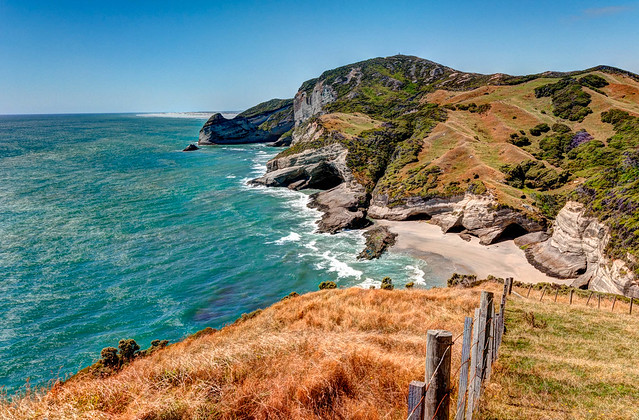
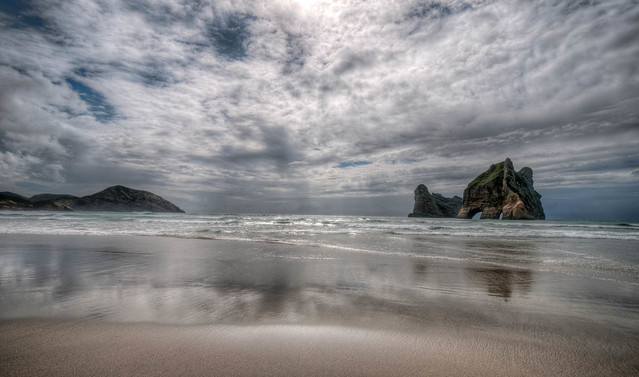
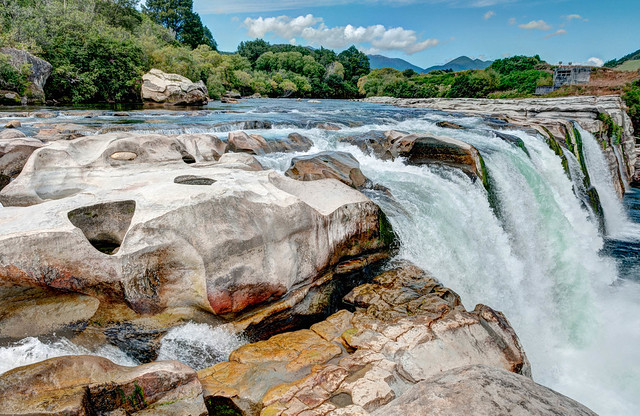

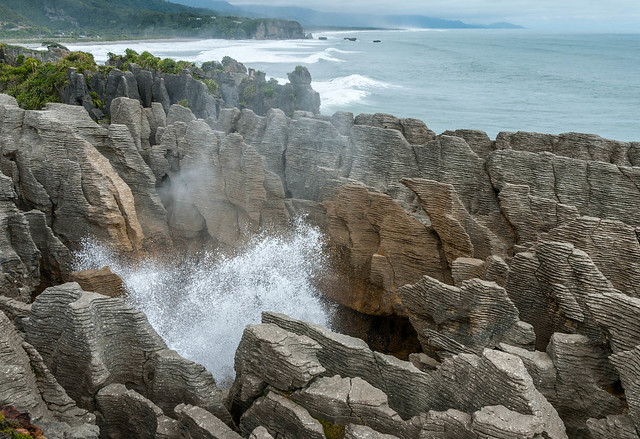
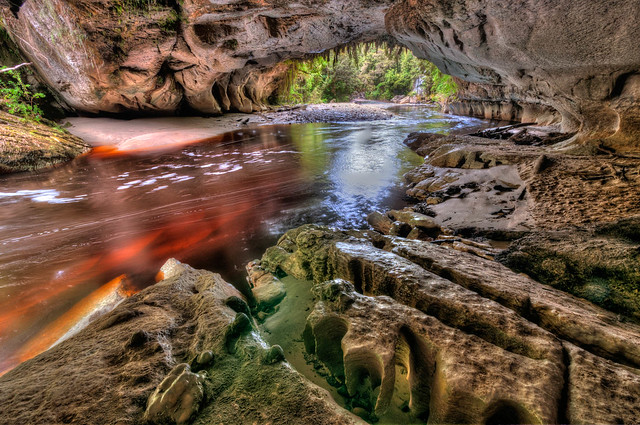

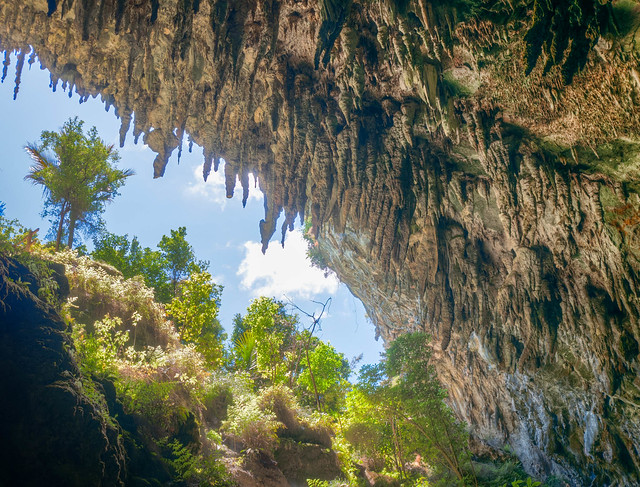
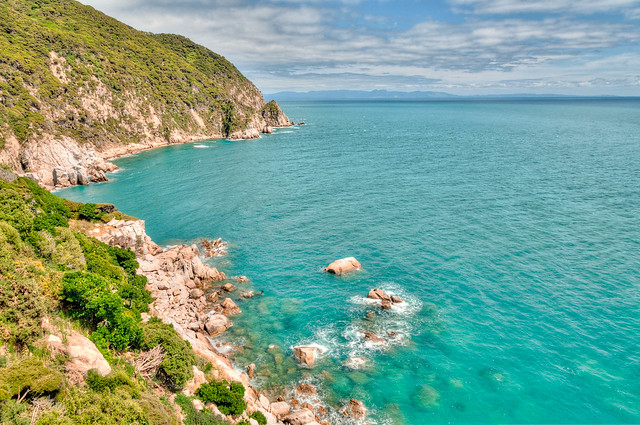
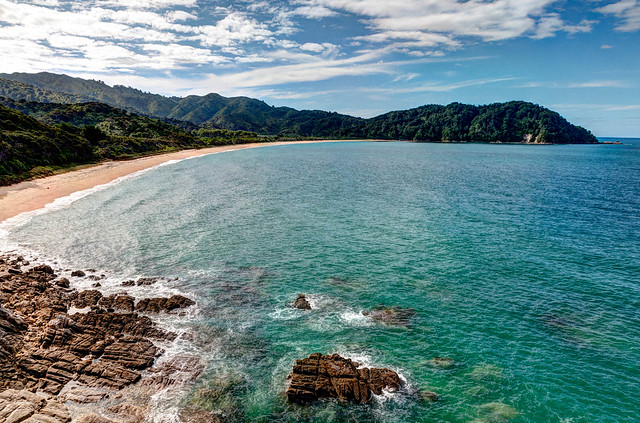
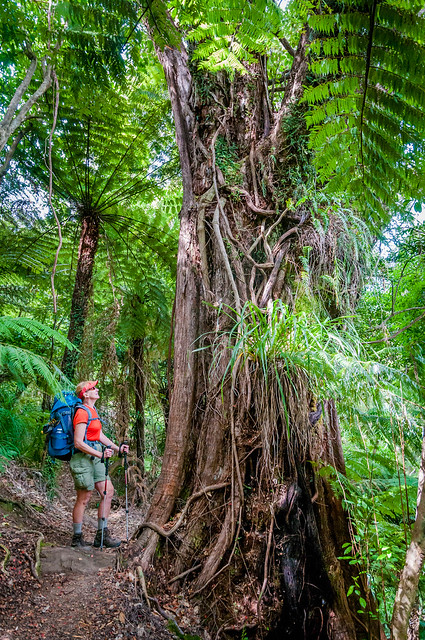
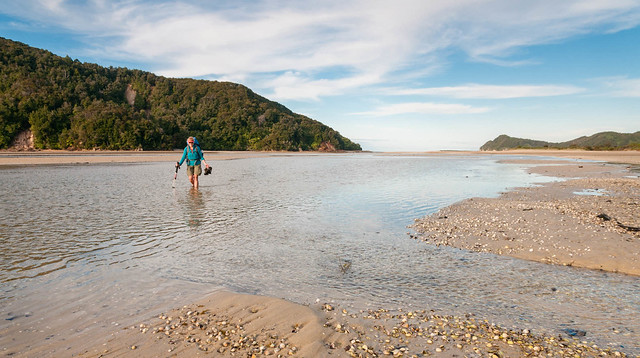
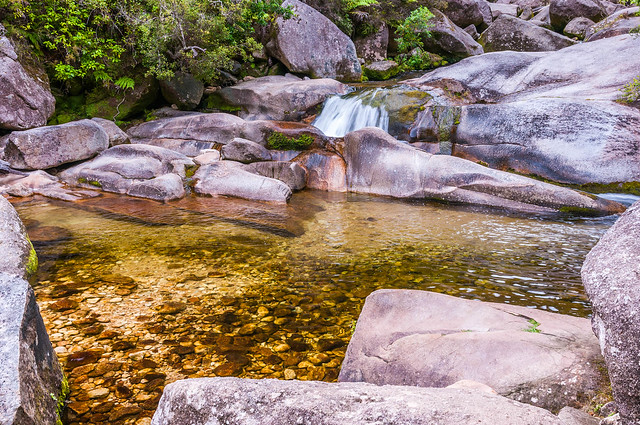
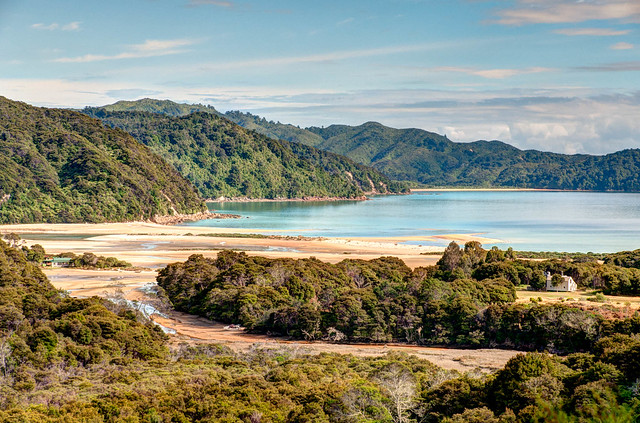
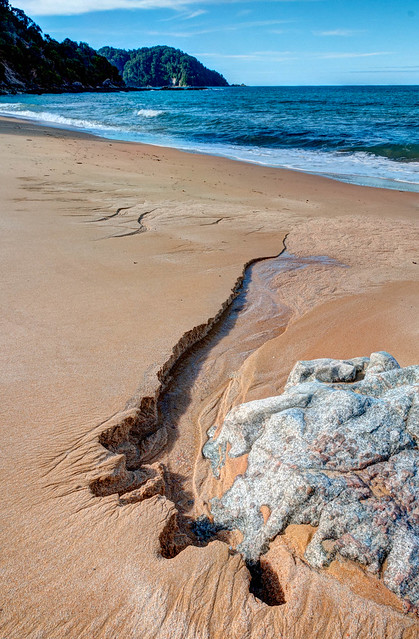
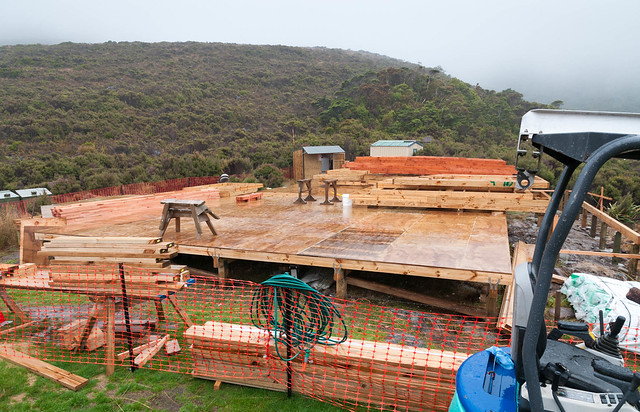
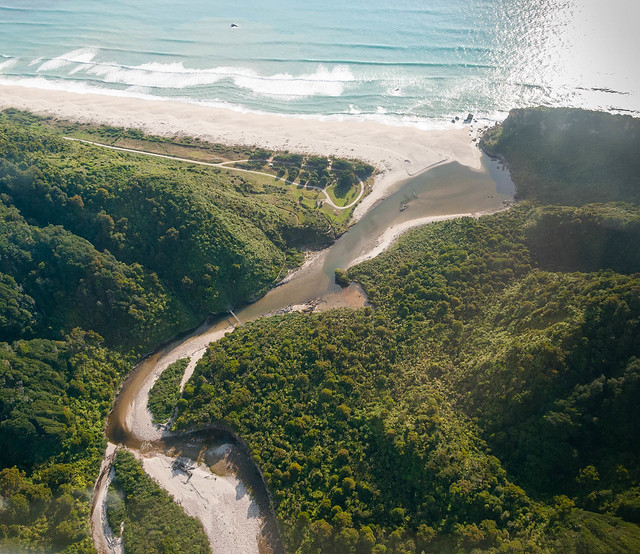
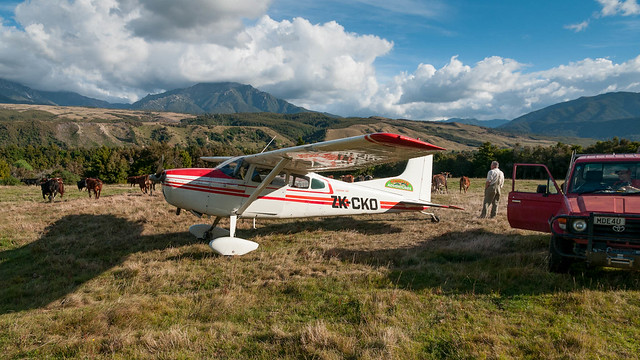
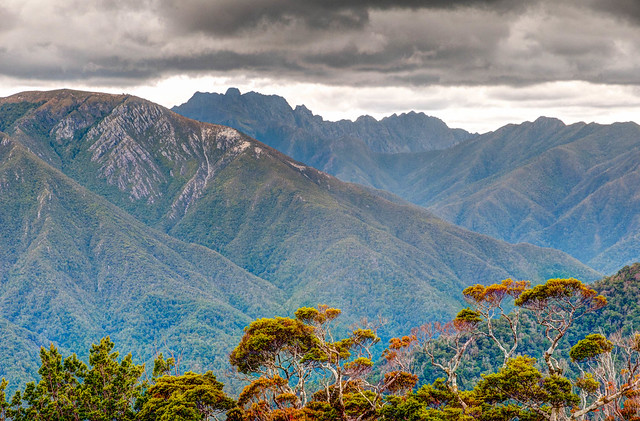



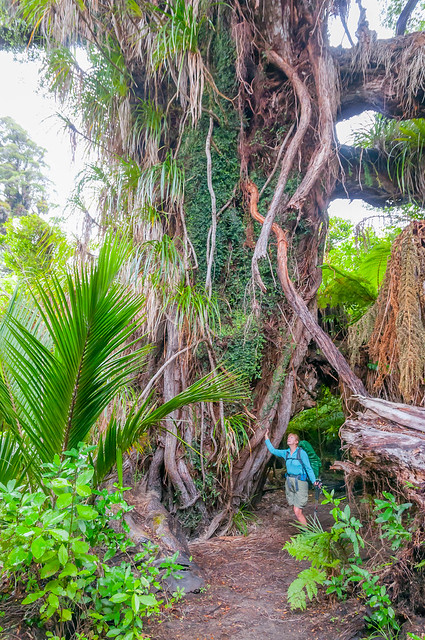
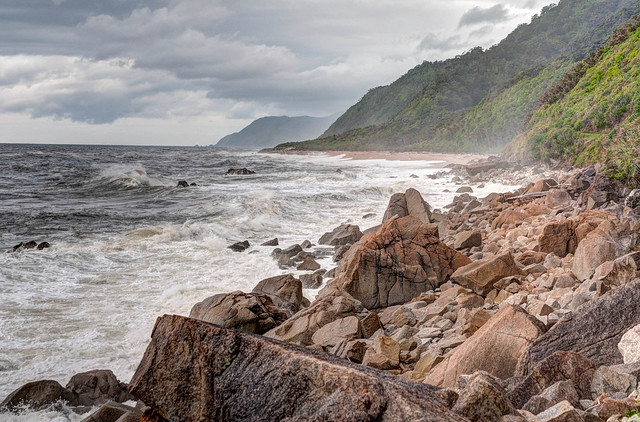
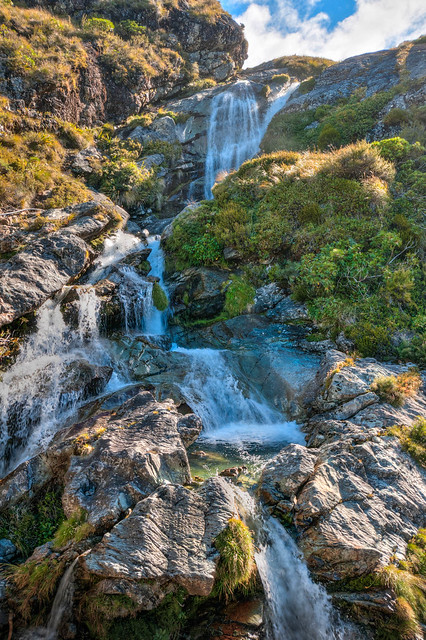
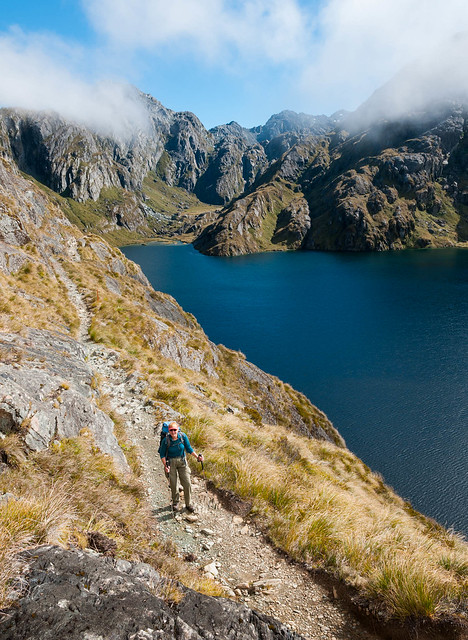
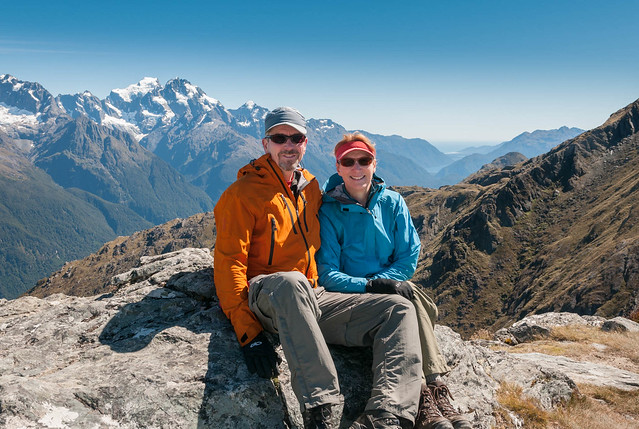
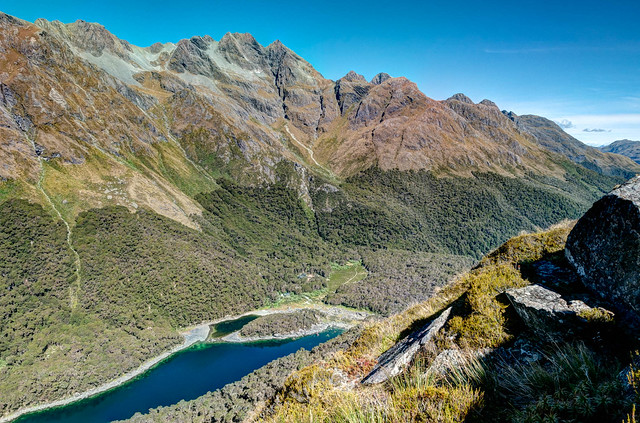
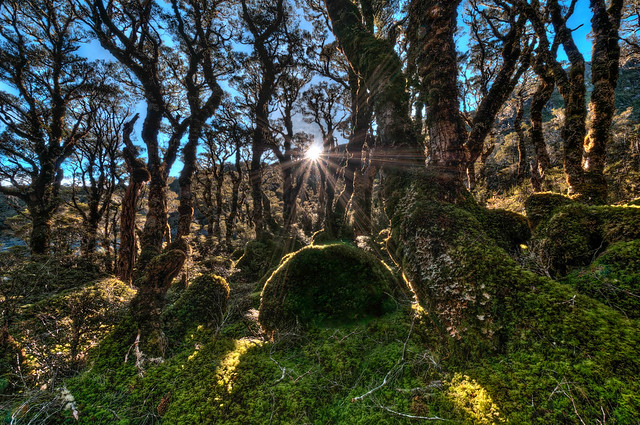
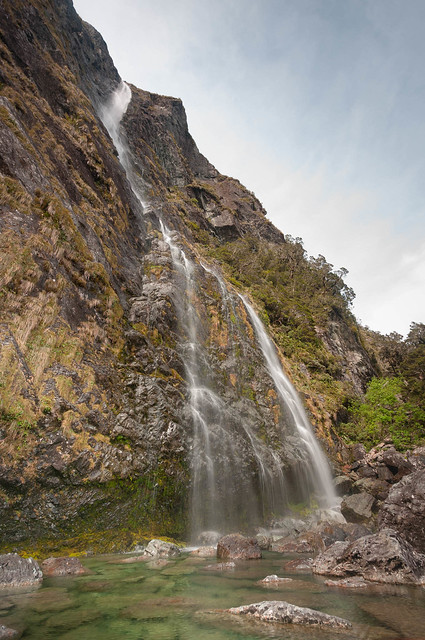
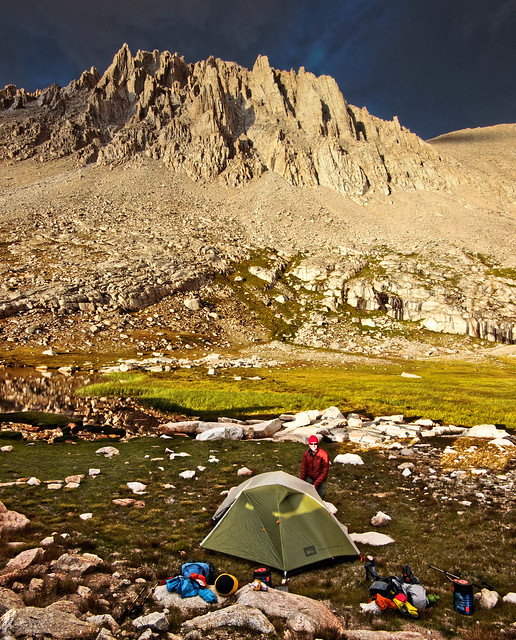
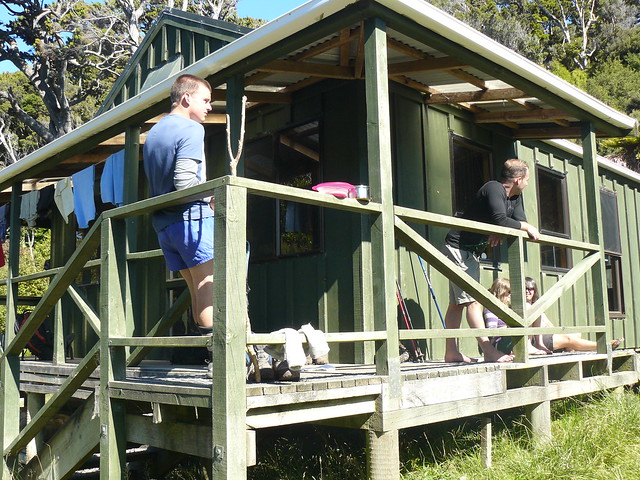
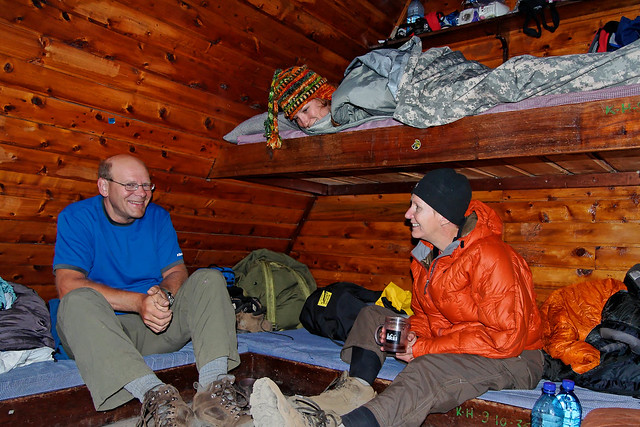


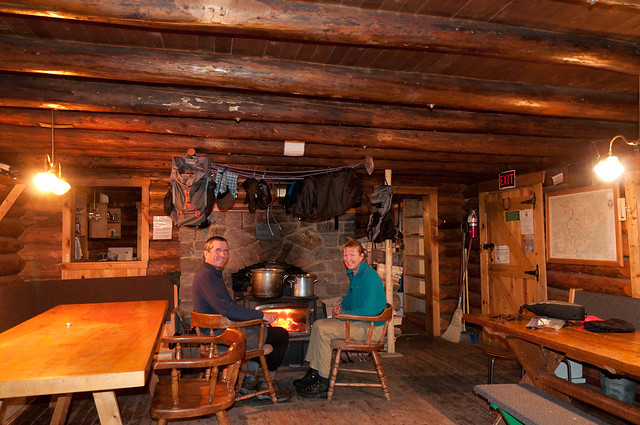
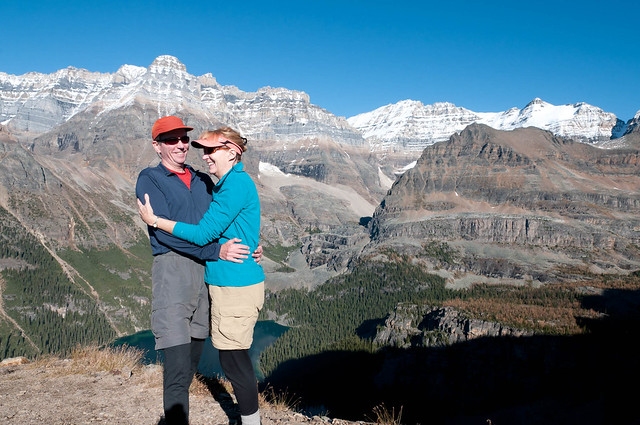

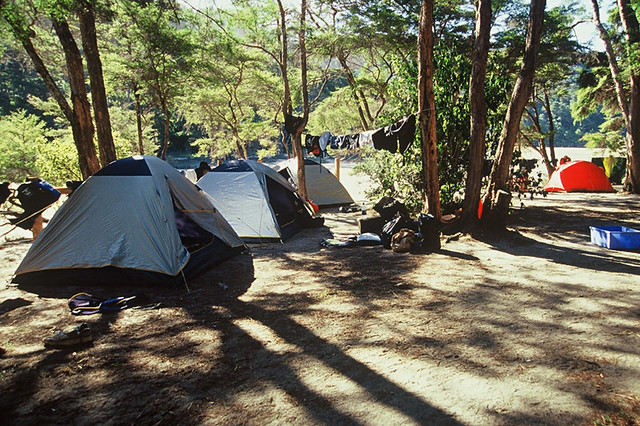
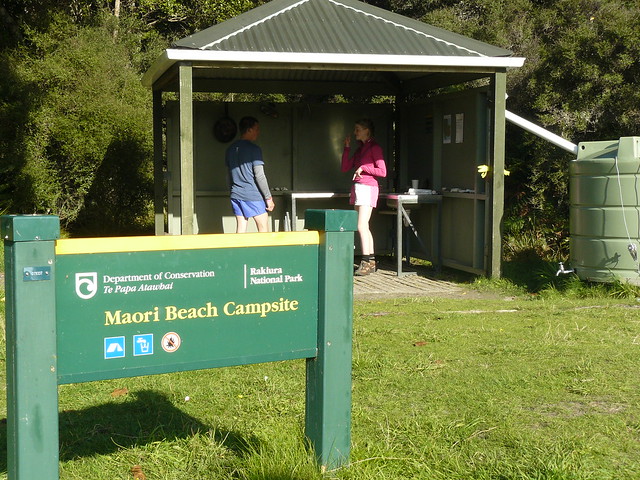
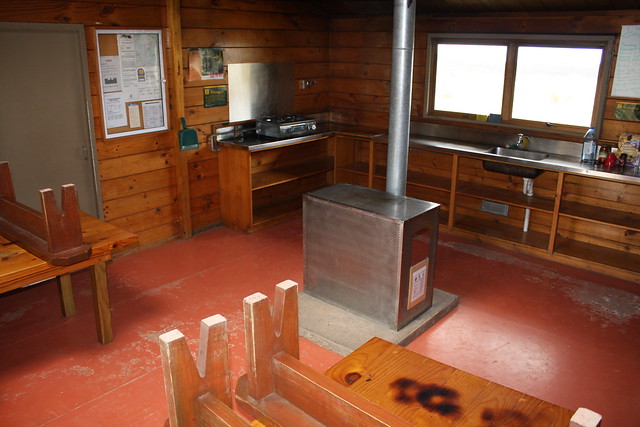


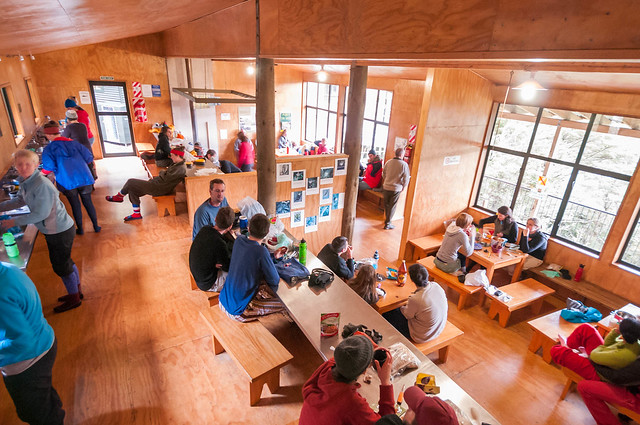
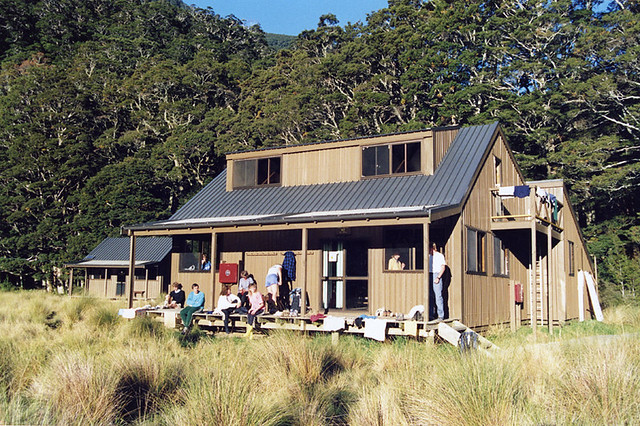


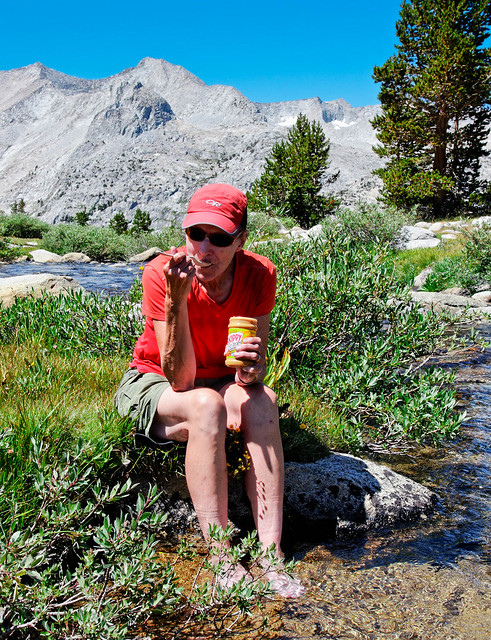
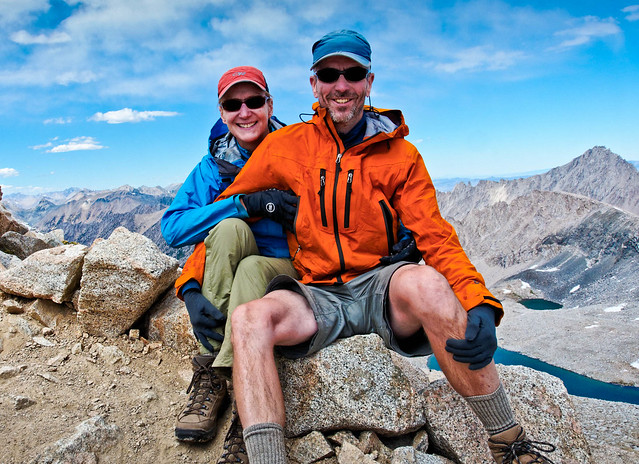
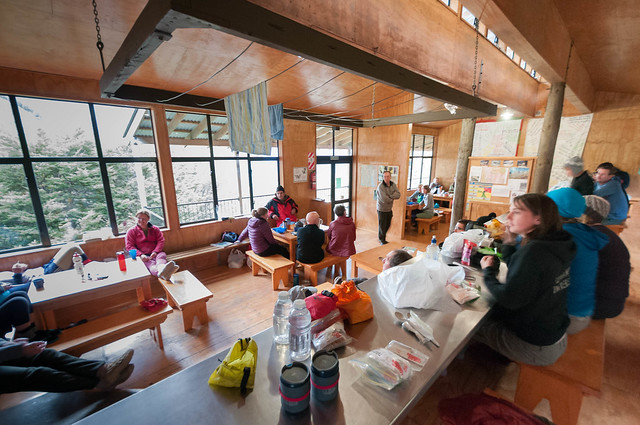
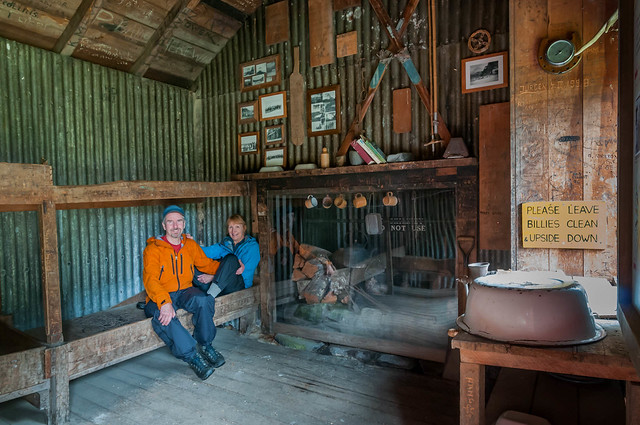

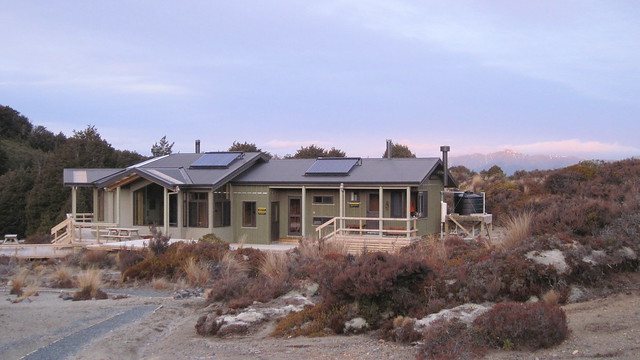
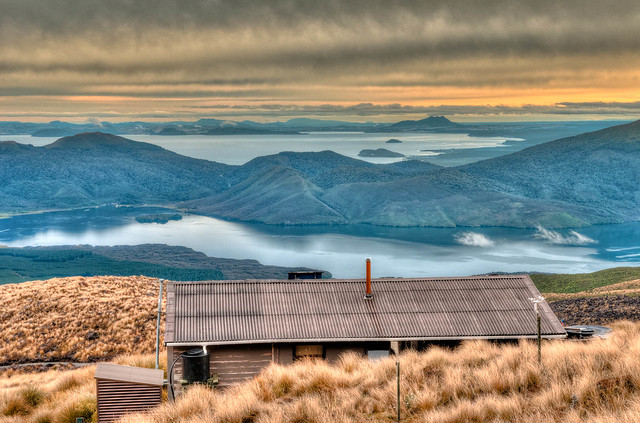
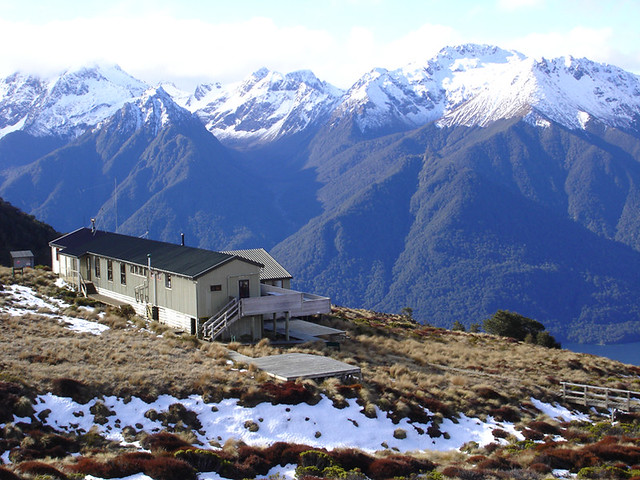



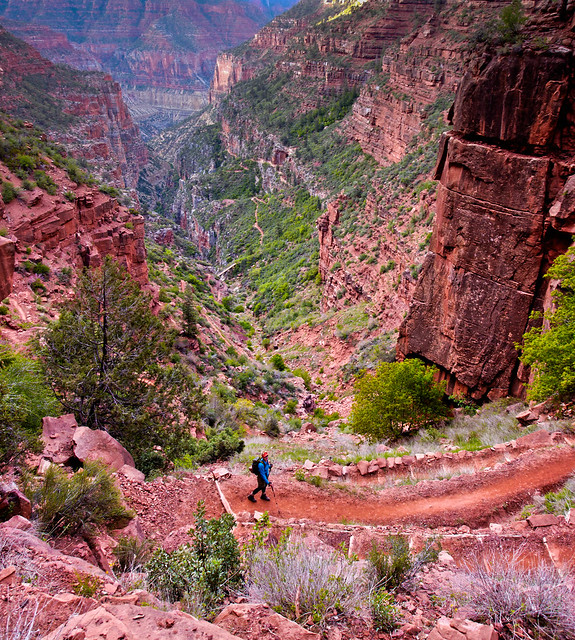

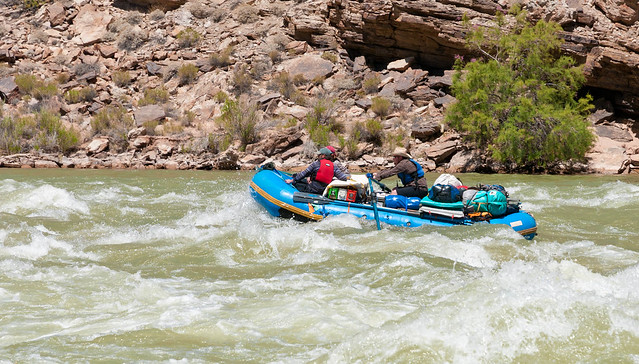
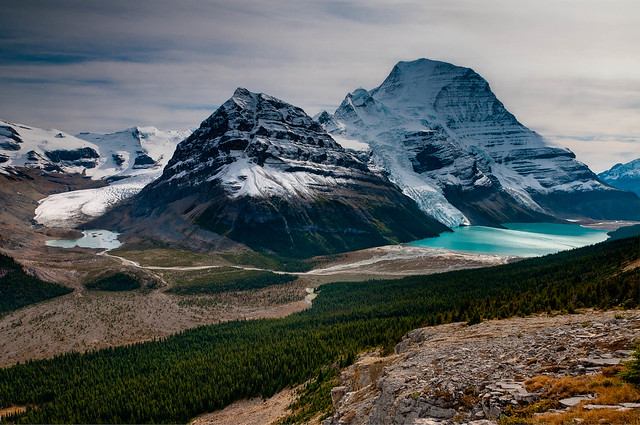




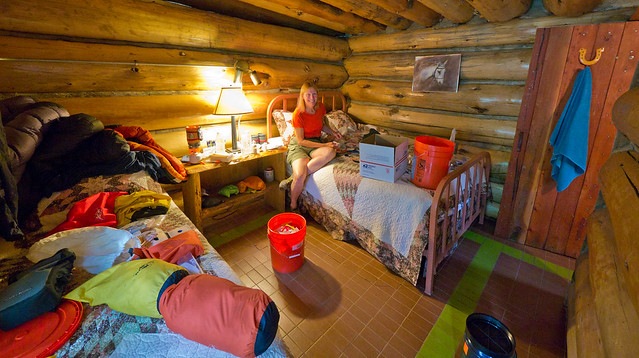






1 comment:
Gorgeous Photos
Post a Comment